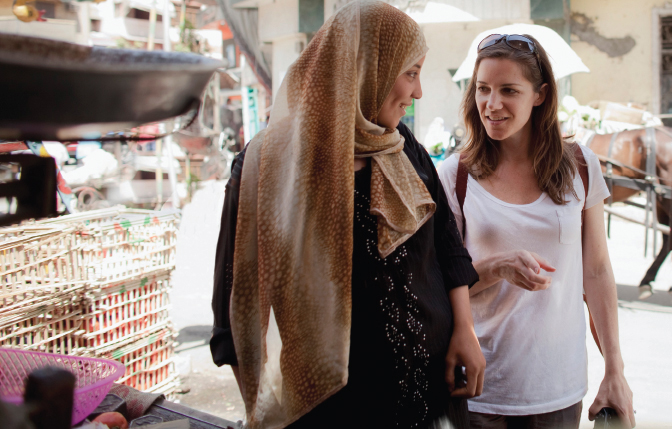6.3.5 Culture and Cooperative Verbal Communication
Printed Page 196
Culture and Cooperative Verbal Communication
Culture exerts a significant impact on verbal communication. As we noted earlier in this chapter, language is cultural, and each culture has its own idea of what constitutes cooperative verbal communication. So how can you tailor your use of language when communicating with people from other cultures? For starters, you can study a particular culture’s guidelines for verbal expression before communicating with members of that culture and then adapt your own use of language according to those guidelines (Chen & Starosta, 2005).
But also consider communication accommodation theory, which holds that people are especially motivated to adapt their language when they seek social approval, when they wish to establish relationships with others, and when they view others’ language usage as appropriate (Giles, Coupland, & Coupland, 1991). In contrast, people tend to accentuate differences between their language and others’ when they wish to convey emotional distance and disassociate themselves from others.

Research on accommodation suggests that when you moderately adjust your language use to match that of others from different cultures, you will be perceived as having high communication skills (Coupland, Giles, & Wiemann, 1991; Giles et al., 1991). The key to such adjustments is adapting to others’ speech rate, clarity of language, and desired balance of turn-taking (Bianconi, 2002). This means attuning yourself early in the conversation to how long the other person takes with his or her turns, how rapidly the individual speaks, how direct he or she is, and how much the person appears to want to talk compared to you. You then fine-tune your verbal communication accordingly: matching the person’s speech rate, employing appropriately direct or more ambiguous language, using turn lengths you believe will please the person, and monitoring the other’s feedback while you are speaking to see whether he or she wants you to continue or stop. At the same time, avoid matching the other person’s dialect or word choices. He or she will likely perceive your behavior as inappropriate and insulting.
Intercultural Interaction
- Bolstering your communication accommodation skills
-
 Recognize when you’re interacting with someone from another culture.
Recognize when you’re interacting with someone from another culture. -
 Observe the person’s speech rate and turn lengths.
Observe the person’s speech rate and turn lengths. -
 Adjust your speech rate to match the pace of his or her language.
Adjust your speech rate to match the pace of his or her language. -
 Adapt your turn lengths to mesh with the individual’s desired distribution of talk time.
Adapt your turn lengths to mesh with the individual’s desired distribution of talk time. -
 Evaluate his or her language clarity and directness.
Evaluate his or her language clarity and directness. -
 Modify your language to be similarly direct or indirect.
Modify your language to be similarly direct or indirect.